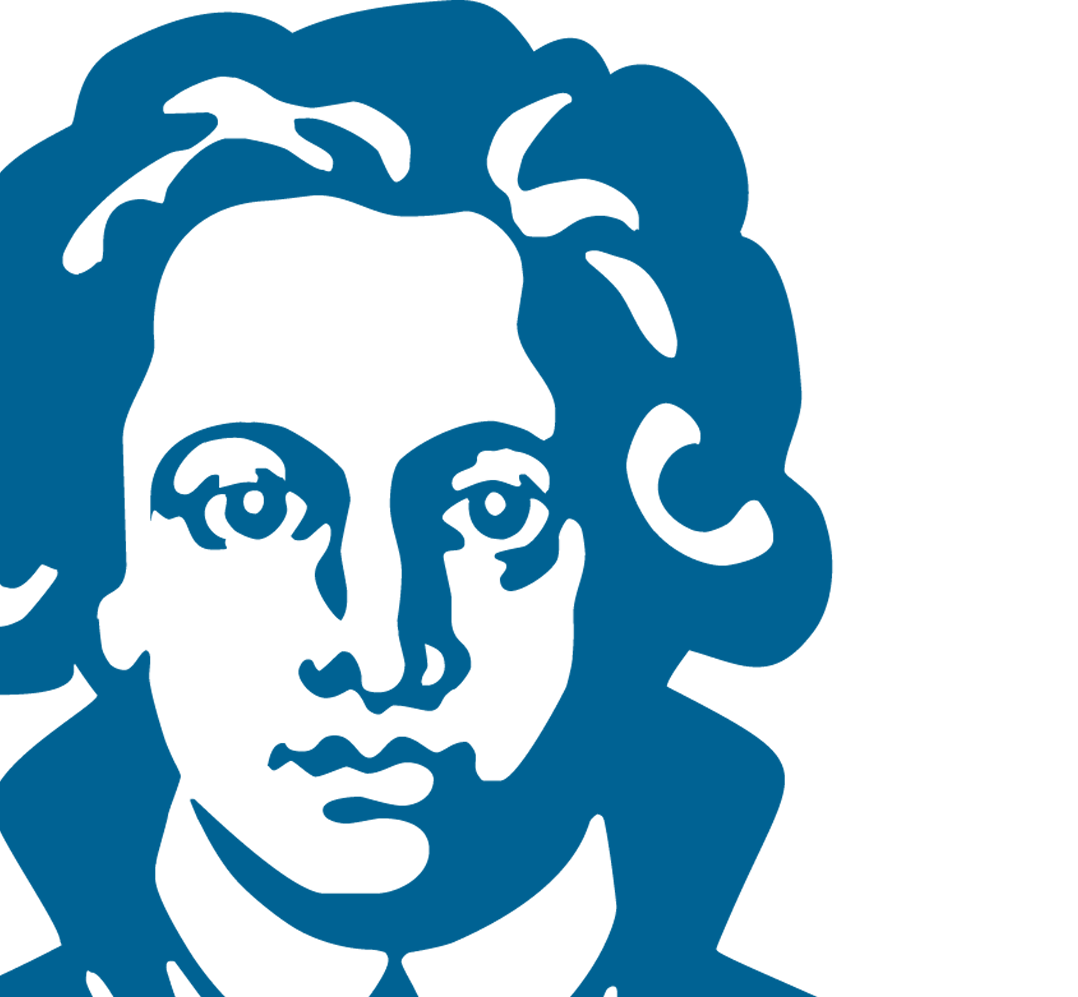
Goethe in progress 2022 – Research
Open-minded research
Some 3,700 researchers and scientists together shape a cosmopolitan workshop of the future at Goethe University Frankfurt, working with regional, national and international partners on solutions for society, business and science and contributing their research to overcoming the challenges of the 21st century. The outstanding individual and collaborative research conducted at our university is bundled into six interdisciplinary profile areas.
Several of our researchers have been awarded in 2022, and many have successfully acquired projects this year – from the federal and state governments, the German Research Foundation (DFG), the European Union and other institutions. When it comes to research groups, collaborative research centers and research training groups, all full proposals led by Goethe University Frankfurt were successful. Here is a selection of them.

First responders for injured tissues
In 2022, Goethe University Frankfurt acquired two Collaborative Research Centers. CRC 2531, “Damage control by the stroma-vascular compartment”, for example, investigates the role of supporting cells in the repair of damaged organs.

How abstract knowledge is stored in the brain
Psychologists and computer scientists are working together in the new DFG research unit ARENA. Their findings in brain research could help make artificially intelligent (AI) systems more efficient and flexible.
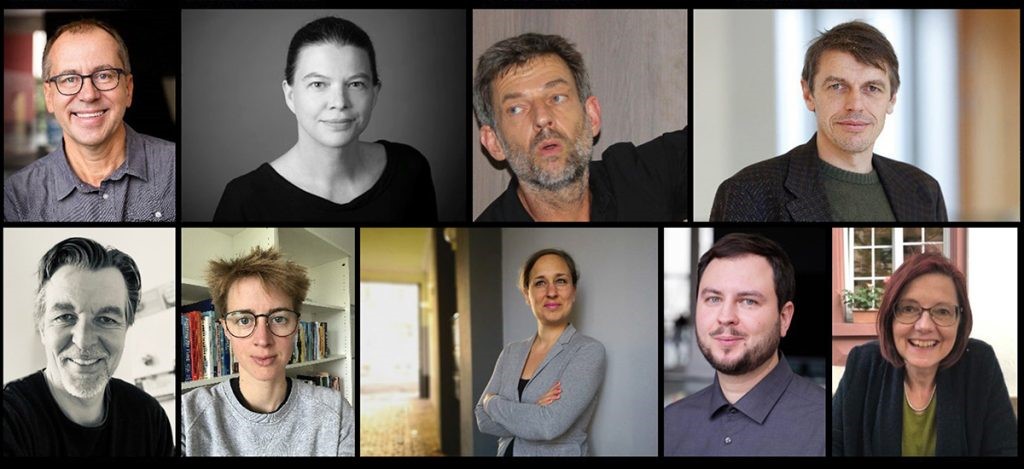
How the future can be “fixed”
The research training group “Fixing Futures” investigates how new technologies can prepare for future events. It is one of two new DFG-funded research projects that support early career researchers in the doctoral phase.
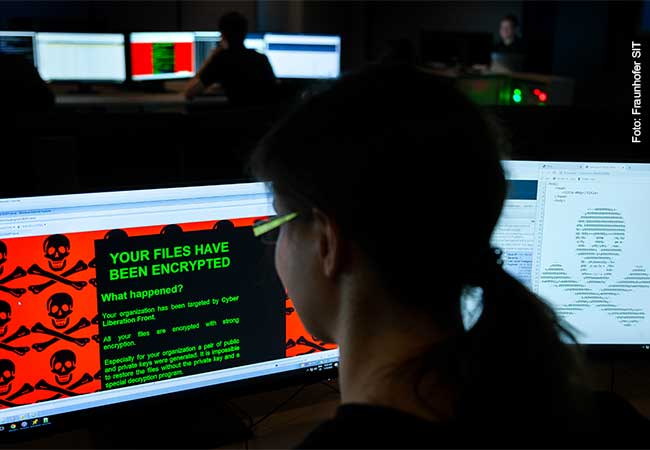
Expertise in cybersecurity and cancer research
Since the end of 2022, researchers have been working on ATHENE, Europe's largest research center for cybersecurity. ATHENE is one of numerous projects at Goethe University Frankfurt that are funded by the state and federal governments, including the LOEWE center “Frankfurt Cancer Institute”.
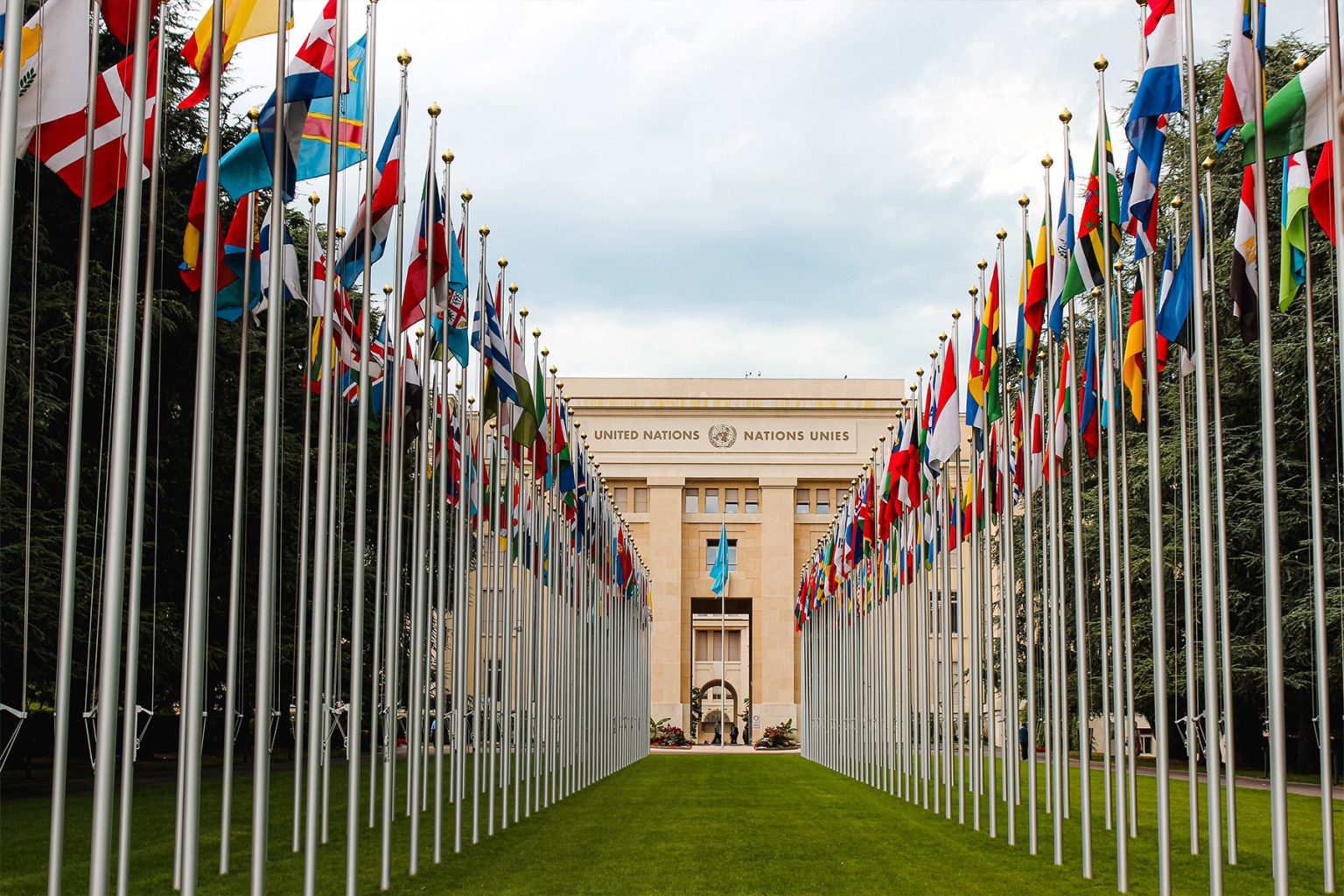
EU funding for groundbreaking research
Five researchers have received prestigious ERC funding for their research projects in 2022. The collaboration of theoretical physicists on the first image of the black hole in the center of the Milky Way was also funded by the European Research Council.
Section through damaged heart tissue (green: heart muscle cells; red: connective tissue): You can see how large amounts of connective tissue are drawn from the blood tissue into the muscle, causing the mechanical properties of the heart to deteriorate (Image: Vessel)
First responders for injured tissues
When organs damaged by an infarct repair themselves, they are supported by scaffold and supporting cells. The new Collaborative Research Center “Damage control by the stroma-vascular compartment” is investigating exactly how this happens.
Today, people suffering a heart attack or stroke have a good chance of surviving. Thanks to major medical advances in acute care, blood circulation in particular is quickly restored, meaning less tissue dies. However, until today, in many such cases too much time passes before therapy is provided. So, while many patients survive the acute attack or stroke, at the same time there is an increase in chronic consequences, including heart failure.
This is where a new translational research field, i.e. one that is closely linked to practice, is opening up for medical science. The aim is to understand how repair processes occur and how they can be supported with therapies, with the ultimate goal of reducing the consequences of heart attacks and strokes.
The new Collaborative Research Center (CRC) “Damage control by the stroma-vascular compartment” is dedicated to this research field, in which recent advances in the development of scientific methods – more specifically in mass spectrometry, single-cell RNA sequencing of tissues and bioinformatics – play a decisive role. They make it possible to not only observe processes in cells, but to also understand the timing of reactions. “The time had to be right for our project,” explains physiologist Prof. Ralf Brandes, Director of Goethe University Frankfurt’s Institute of Cardiovascular Physiology and coordinator of the CRC.
The center’s starting point is the crucial role played by the stroma-vascular compartment (SVC) in the repair process – i.e. the scaffold and supporting cells for the particular cell type responsible for a specific organ function. The SVC’s supporting cells become first responders in injured heart muscle cells, for instance, ensuring that new blood vessels form after an injury. The scientists working at the CRC are interested in the mechanisms and molecular players that orchestrate the response to injury in a multicellular context, focusing in particular on research on the heart, brain and blood vessels. More specifically, they are investigating the complex interplay between the SVC’s cell types, how repair is coordinated, and how cells ultimately regain their function.
Starting in 2022, the CRC will receive a total of €14.2 million in funding for four years to research “Damage control through the stroma-vascular compartment”. The consortium comprises 28 leading scientists, including ten younger researchers. Its spokesperson is Goethe University Frankfurt; partners are the Max Planck Institute for Heart and Lung Research in Bad Nauheim, the Berlin Institute of Health at Charité, Heidelberg University Hospital, and Johannes Gutenberg University Mainz. A Research Training Group for early career researchers will soon be added to the consortium.
The multidisciplinary consortium is initially taking a two-pronged approach. One group of scientists is investigating the cell's own mechanisms for recognizing as well as reacting and adapting to damage. What happens in the metabolism after a stroke or heart attack, how are genes controlled, what are the cellular lines of communication like? A second group focuses on damage control between a variety of cells. How is physiological cellular “crosstalk” organized, and how do different cell populations resume their regular functions?
We would like to find ways to medically support the body's own healing processes
The aim of the project is to identify mechanisms that can be used to support the SVC in its repair process if and when needed. The scientists already know they will apply for a second grant once the first comes to an end, in order to investigate damage control in even more complex environments, i.e. in the context of lipid metabolism disorders, diabetes or ageing. This is necessary, Brandes explains, because heart attacks often occur in older, “multimorbid” people, who typically suffer from at least two diseases. Only in a third – and final – funding stage will the researchers focus on possible therapies. “We would like to find ways to medically support the body's own healing processes,” Brandes emphasizes.
(pb)
New Collaborative Research Centers
Goethe University Frankfurt acquired two Collaborative Research Centers (CRC) in 2022, which will be funded with a total of €28 million over the next four years: CRC 1531 deals with the body's own repair mechanisms of tissue injuries to the heart or brain that occur as a result of infarcts, for example. The researchers are investigating how the connective tissue environment contributes to the repair of this damage (see the article “First responders for injured tissues”).
CRC 1507 “Protein Assemblies and Machineries in Cell Membranes” focuses on a fundamental principle of life: biochemical reactions and subcellular architectures in membranes. The protein arrangements and molecular mechanisms in cell membranes are of central importance to vital processes – as such, they transfer energy, transport nutrients and metabolic products, and control communication within and between cells. To understand the highly complex organizational principles even better, scientists in CRC 1507 are researching protein complexes – from protein assemblies to cellular machines and supercomplexes – in the cell membrane. The CRC, whose spokesperson is biochemist and structural biologist Prof. Robert Tampé, relies on the globally visible competence center in the structure and functional analysis of membrane proteins.
Both Collaborative Research Centers cooperate with Johannes Gutenberg University Mainz, among others, and underscore the strong network of the strategic Rhine-Main Universities (RMU) alliance.
New DFG Priority Programme
The “Visual Communication” (ViCom) project is launched as part of a new German Research Foundation priority programme. Prof. Cornelia Ebert (Goethe University Frankfurt) and Prof. Markus Steinbach (University of Göttingen), both Linguistics, applied for the joint project, in which Goethe University acts as the main spokesperson. The program focuses on communicative possibilities for conveying information outside of the spoken language, also and including in relation to other channels.
Kurz & bündig: Neues aus der Forschung
A decisive milestone was reached in 2021 on the way to sharpening Goethe University Frankfurt’s research profile: six profile areas were identified that reflect not only the university’s research achievements, but also offer innovative potential for further explorative research questions.
In November 2022, a series of lectures was launched in which the profile areas presented themselves to the university community, providing information on the topics they are researching, their members and self-image. Work in the profile areas is interdepartmental and interdisciplinary. The following profile areas work together: Orders & Transformations; Space, Time & Matter; Molecular & Translational Medicine; Structure & Dynamics of Life; Sustainability & Biodiversity; Universality & Diversity.
Most cited
Of the almost 7,000 most cited researchers in the world, six conduct research at Goethe University Frankfurt, as shown in the current citation ranking of the 2022 “Web of Science” by Clarivate Analytics.
Center for Interreligious Studies
The Frankfurt-Tel Aviv Center for Interreligious Studies was officially launched on December 19 with a two-day conference held in Israel. The highlight of the inauguration was the signing of the cooperation agreement by the presidents of Tel Aviv University and Goethe University Frankfurt. The letter of intent for the center’s establishment was signed a year ago. The new center is dedicated to researching religious and interreligious dynamics.
Conference in Israel marks official start of new Frankfurt-Tel Aviv Center
Five research clusters enter the race
The decision was made at the end of 2022: Next year, Goethe University Frankfurt will send four new research clusters into the upcoming round of the Excellence Strategy of the German federal and state governments. The Cardiopulmonary Institute (CPI) Cluster of Excellence, which has existed since 2019, will submit a full proposal directly.) wird direkt einen Vollantrag einreichen.
The new research projects specialize in the topics of trust in conflict (CONTRUST), infection and inflammation (EMTHERA), the origins of heavy elements (ELEMENTS) and cellular architectures (SCALE). The researchers at Goethe University Frankfurt are collaborating with colleagues from the strategic Rhine-Main Universities (RMU) alliance as well as other partners.
Lauded: Fritz Bauer Institute
Combining high-quality research and a wide range of educational offerings is something the Fritz Bauer Institute does very well despite its limited staffing. That is the conclusion reached in an evaluation of the German Science and Humanities Council, which was commissioned by the Hessian Ministry of Science and the Arts. The Frankfurt-based institute's research on National Socialist crimes of violence, and especially on the Holocaust, as well as on the legal and societal handling of these crimes after 1945, is of high quality, said the report, which also positively highlighted the closer cooperation with Goethe University Frankfurt, made possible by a cooperative professorship.
German Science and Humanities Council certifies Fritz Bauer Institute's “impressive achievements”
Social transformation of the working world caused by digitalization
A new endowed professorship in “Digital Transformation and Work” will enhance social science research at Goethe University Frankfurt and build on the tradition of critical social theory. The relevant contract was signed on November 8, 2022, by the two donors ProLife Foundation and Frankfurt University of Labour along with Goethe University. The new endowed professorship will research the social transformation of the working world caused by digitalization.
Launched: RMU-Italy Forum
The strategic alliance of Rhine-Main Universities (RMU) launched its newly founded RMU-Italy Forum in December 2022. The forum aims to network and raise the profile of Italy-related research at the respective universities. To this end, eight researchers from the Rhine-Main universities from the areas of humanities and social sciences have joined forces.
An orange is an orange is an orange: an AI system developed for image and speech recognition can link an image of an orange with the word “orange”. What it cannot do, however, is generalize to other sensory impressions – something our brain does effortlessly. (Photo: Mae Mu/unplash)
When brain research and artificial intelligence interact
Psychologists and computer scientists in the new DFG Research Group ARENA are investigating how abstract knowledge is stored in the brain. The findings should help make artificially intelligent (AI) systems more efficient and flexible.
Now that AI systems are able to reliably recognize objects and language, AI research is experiencing a boom. However, in addition to still requiring a lot of work and energy when it comes to their training, these systems store their knowledge of objects and words differently to the human brain. Most modern AI systems are neural network models. They consist of several layers of interlinked artificial nerve cells, which is why they are also referred to as deep neural networks. An AI system developed for image and speech recognition can link an image of an orange (input) with the word “orange” (output). What such an AI system cannot do, however, is generalize to other sensory impressions – something our brain, on the other hand, can do effortlessly.
This is because one of the most important properties of the human brain is its ability to abstract: our knowledge about an orange can be activated when we see, feel, taste or smell it. That in turn means that our semantic knowledge about oranges is mapped or represented abstractly in the brain – where it exists regardless of how we perceive oranges through our senses.
While AI could learn this type of abstract knowledge representation from the human brain, the “format” in which our semantic knowledge is stored in the human brain is not yet well understood. Brain research, in turn, stands to benefit greatly from powerful AI models. Funded by the German Research Foundation (DFG), the interdisciplinary research group ARENA (“Abstract Representations in Neuronal Architectures”) at Goethe University Frankfurt’s Institutes of Psychology and Computer Science, the Frankfurt Institute for Advanced Studies (FIAS) and the Max Planck Institute for Software Systems in Saarbrücken is building a bridge between computer science, psychology and neuroscience with a view to exploring these issues. ARENA will receive a total of around €3.7 million in funding over the next four years.
An important goal of the Research Group is to investigate whether AI systems that are trained with data of different formats – images, language or videos, i.e. with multimodal data – develop more abstract forms of knowledge or at least forms of knowledge that are more similar to the human brain. Prof. Gemma Roig, who acts as a bridge between computer science and psychology, plays a key role in this work.
Conversely, ARENA’s psychologists and neuroscientists are interested in how well AI systems can explain how the brain works when processing abstract meanings. To this end, they want to compare how an AI system and the human brain work when solving the same tasks. To answer this question, AI models are employed as a statistical tool to analyze brain activity during the processing of language and object recognition tasks, which is measured using functional magnetic resonance imaging and magnetoencephalography methods at Frankfurt University Hospital’s Brain Imaging Center. The researchers expect that, at the highest level of abstraction, the models will address the same representations as those in the brain.
A central aspect of this work will consist of collecting a very large data set of test subjects, who will work on a whole series of corresponding tasks in several study sessions while their brain activity is measured. “The planned data set is unique and will also be shared with other scientists in the future in the spirit of open science,” explains Christian Fiebach, ARENA spokesperson and Professor of Neurocognitive Psychology at Goethe University’s Faculty of Psychology.
But first, the modelers in the ARENA Research Group will use the data collected to investigate whether they can make AI systems more flexible and efficient based on the biological model of the human brain. To this end, findings from developmental psychology will also be incorporated. Conversely, the researchers want to learn new analysis techniques from the modelers to help them refine their models of the brain. In other words, how can the neuronal image of the orange in the brain be better decoded, and how can this knowledge contribute to giving AI models more human-like knowledge about the orange in the future?
(mb)
New DFG Research Units with Goethe University Frankfurt as spokesperson
The German Research Foundation’s (DFG) Research Units provide funding to several outstanding researchers to work together on a specific research task. This type of funding far exceeds the DFG's individual funding opportunities.
Five large trauma centers in Germany, at the universities of Frankfurt, Ulm, Aachen, Magdeburg and Erlangen, have joined forces to set up the DFG Research Unit “Translational Polytrauma Research to Provide Diagnostic and Therapeutic Tools for Improving Outcomes” (FOR 5417), which received funding for the first time in 2022. The unit, led by Prof. Ingo Marzi from Goethe University Frankfurt’s Faculty of Medicine, aims to contribute to better explaining and predicting the clinical course after a trauma. In the first funding period lasting four years, the unit will receive around €3.5 million.
You can read about the two other new DFG-funded research units in the articles “When brain research and artificial intelligence interact” and “How family decisions affect the economy – and vice versa”.
Reinhart Koselleck Programme funding from the DFG
Microbiologist Prof. Volker Müller has been awarded a Reinhart Koselleck Programme from the German Research Foundation (DFG), which funds particularly innovative and, in a positive sense, risky research projects. For many years now, Müller has been successfully researching how acetic acid-producing bacteria (acetogens) extract energy from CO2. Now he wants to crack the last puzzle of this energy production.
The way in which private households are organized influences income, consumption and wealth in an economy. (Photo: Annie Spratt/Unplash)
- DFG Research Units
How family decisions affect the economy – and vice versa
Singles, couples, single parents, families with one child or with several – private households can look very different. A new Research Unit at Goethe University Frankfurt wants to find out how the individual behavior of households influences the overall economic situation and family policy – and vice versa.
The way in which income, consumption and wealth are distributed in an economy has a lot to do with decisions made within individual households. The “Macroeconomic Implications of Intra-Household Decisions” Research Unit will take a close look at the behavior of individual household members with regard to consumption, employment and investment opportunities, and explore their interaction. The German Research Foundation (DFG) will fund the research with €2.44 million for an initial period of four years. The spokesman of the unit, which consists exclusively of Frankfurt economists, is Prof. Alexander Ludwig, Professor of Public Finance and Macroeconomic Dynamics at Goethe University Frankfurt. The other members are Georg Dürnecker, Professor of International Trade, Development and Growth; Leibniz Prize winner Nicola Fuchs-Schündeln, Professor of Macroeconomics and Development; Leo Kaas, Professor of Economics, in particular Macroeconomics and Labor Markets, and the research unit’s deputy spokesperson; as well as junior researchers Chiara Lacava and Dr. Zainab Iftikhar, who also specialize in research related to labor and family economics.
Traditional macroeconomic models do not take into account the dynamics in private households
— Alexander Ludwig
“Traditional macroeconomic models do not take into account the dynamics in private households, each of which is represented by a single member. Using complex economic models, we can now introduce interactions between the individual household members into macroeconomic models,” explains Prof. Ludwig, adding that, in this way, the group’s research will contribute to gaining an even better understanding of the microeconomic foundations of macroeconomics. The group intends to examine the topic of inequality not just between, but also within individual households – including, for example, the unequal distribution of income between men and women.
The research is divided into eight projects, each of which will address different topics. One of them focuses on the question of how the possibility of freezing eggs and thus postponing the realization of the desire to have a child can influence women’s work biographies. Some companies offer to cover the costs of this procedure to keep the workforce in the company. But what is the impact on women, or on the economy as a whole? Other topics include the effects of the intra-family division of labor on the income situation of individuals, and the interrelation between housing policy measures and families’ housing decisions.
The researchers hope their work will fundamentally enrich our knowledge of how economic measures work, and in how far tax and transfer payments influence decisions on labor supply, savings, fertility and housing demand. In so doing, they will examine the measures’ macroeconomic efficiency as well as their distributional effects. To illustrate these relationships, the research will focus, for example, on the extent to which labor-market specialization of one partner in a family – caused, e.g., by the birth of a child or by tax policy measures such as spousal splitting tariffs (as prevalent in Germany) – leads to greater inequality between men and women, and the extent to which this either has a negative impact on overall economic efficiency – by reducing women’s labor force participation, for instance – or in fact has a positive effect, since greater specialization increases the labor productivity of the household’s main breadwinner.
(asa)
The professors at the new “Fixing Futures” Research Training Group are researching the future in different ways (top row, from left to right): Thomas Lemke (Photo: Mafra Merielli), Martina Klausner (Photo: private), Peter Lindner (Photo: A. Nikulin), Thomas Scheffer (Photo: Uwe Dettmar), (bottom row, left to right): Marc Boeckler (Photo: private), Lizzie Richardson (Photo: private), Barbara Brandl (Photo: Jan-Frederik Bandel), Josef Barla (Photo: Merielli Mafra), Gisela Welz (Photo: private).
How the future can be “fixed”
How do you prepare for future events? What role do new technologies play in this? And what happens if everything turns out differently than expected? The new “Fixing Futures” Research Training Group at Goethe University Frankfurt is addressing these questions.
Although people have always wondered what the future might hold, it seems the question has never been as pressing as it is today. Contemporary societies are facing new political, economic and ecological challenges – including in connection with global warming, pandemics and ever new refugee movements. To prepare for the future, not only are scenarios and problems anticipated, many times technological solutions are prepared, too. The future is “fixed” in a way – whereby the dual meaning of the English word “to fix” applies: “On the one hand, it is about fixing futures so that we can prepare for them. On the other hand, it also implies repairing futures that are considered deficient,” explains Prof. Thomas Lemke, who will be working with eight other researchers as part of the group, which combines expertise in sociology, cultural anthropology, and human geography.
How do you prepare for events that you expect will happen in the future? What precautions are taken, and how do you justify these decisions? And what if the future turns out to be different and you are not prepared? Such misjudgments can have serious consequences. The Research Training Group will examine the three areas of economics, governance and life. What is striking is that technological solutions are available and offered in all areas and that decisions about their use are often left to the individual. Lemke points to social freezing as an example, where the desire to have children is postponed to the future in the interests of a career. “You ask yourself: why aren't these things discussed in society?” Whether it's a gene bank for endangered animal species or a switch to e-mobility – people often rely on the credo that “technologies will save us”. But we could just as well think about how to tackle the root of the problems. The distribution of power plays a major role here and is particularly evident when it comes to climate change: those who suffer the most from the consequences are neither responsible for the causes nor do they have any significant say in potential solutions.
The “Fixing Futures” Research Training Group follows on from the “Science and Technology Studies, Economies, Governance, Life” Master's program and the interdisciplinary research network “Lab for Studies in Science and Technology”, and offers new prospects for early career researchers seeking to gain qualifications in this field. Sociologist Prof. Thomas Lemke is the spokesperson, with cultural anthropologist Prof. Dr. Gisela Welz as co-spokesperson. Ten doctoral students and two post-docs will conduct research in the group – and thus be prepared for a variety of professional fields and institutions in academia and beyond.
(mb/pb)
Research Training Groups
Research Training Groups support early career researchers during their doctoral studies. At the same time, they prepare them for the “science” job market. In 2022, Goethe University Frankfurt gained two new Research Training Groups: “Fixing Futures” deals with the anticipation of “futures” and how society and individuals prepare for them, while “Standards of Governance” – which was jointly established with TU Darmstadt – is dedicated to the question of how standards of governance, which oblige public and private actors to adhere to norms of good governance, change the possibilities of collective self-determination.
The two Research Training Groups “Fixing Futures” and “Standards of Governance” will start their work on April 1, 2023, and will initially run for five years, with the possibility to extend by another four.
The “Resolution of Inflammation” Research Training Group at Goethe University Frankfurt will continue its work for a further four and a half years. The group is concerned with the relatively new finding that the resolution of inflammation is actively controlled by the body, and aims to explore how this process occurs at the cellular and molecular levels.
How are standards of good governance implemented in practice? That is one of the questions researched by PhD candidates of different disciplines as part of the new “Standards of Governance” Research Training Group.
- Research Training Groups
How good governance works
Amid repeated talk about the “crisis of democracy”, the concept of “good governance”, which commits public and private actors to standards of good governance, has spread worldwide. A new Research Training Group at Goethe University Frankfurt and TU Darmstadt is exploring the question of how “standards of governance” change the possibility of collective self-determination.
Democratic societies are facing major challenges today. Many attempts to transfer the Western model of democracy to other parts of the world have failed. The global political influence of authoritarian states like China has been increasing for years. At a time when democracy as a form of government appears to be in crisis, the concept of “good governance” is becoming increasingly popular and today shapes not only political structures, but also companies and institutions.
The requirements of good governance apply to both the public and private sectors
The new cross-location “Standards of Governance” Research Training Group, which the German Research Foundation is funding with €4.4 million over the next five years, investigates the concept of “good governance”, focusing not only on general standards such as transparency, participation and accountability of those in power, but also, depending on the concept, more specific aspects such as gender equality, combating corruption and the systematic evaluation of policies. The requirements of good governance apply to both the public and private sectors. States and local authorities, listed companies, financial market players and non-governmental organizations – all of them are today assessed and ranked according to their performance on scales of good governance.
The group’s innovative central idea is to understand norms of good governance as standards – comparable to technical norms – and to analyze them. The interdisciplinary collaboration and combination of empirical-analytical and normative research will address questions such as how standards of governance emerge and why they are codified. Further research questions include: Why do standards of governance spread across territorial and possibly sectoral boundaries? How are standards of governance operationalized in practice and how is compliance measured? How are attempts made to enforce standards of governance and why is resistance to such attempts being formed? What are the consequences of the rise of standards of governance and how are these consequences to be normatively evaluated?
By linking research subjects that are not normally considered together, the group also enables a dialog of political theory and institutional studies with political economy, international relations (IR), jurisprudence and sociological modernization research.
The new Research Training Group has been jointly applied for by Goethe University Frankfurt and TU Darmstadt. Jens Steffek, Professor of Transnational Governance at TU Darmstadt, is the spokesperson; the deputy spokesperson at Goethe University is democracy researcher Professor Sandra Seubert. Both universities are involved with five researchers each from the fields of political science, sociology, philosophy and law. The group is interdisciplinary in nature and serves to qualify early career researchers.
“A central challenge for this Research Training Group will consist of breaking down the major theories of democratic science into empirical studies,” says Prof. Sandra Seubert, adding that, in so doing, the cooperation will be able to test the most important theses. Goethe University Frankfurt and TU Darmstadt are part of the strategic Rhine-Main Universities (RMU) alliance and together offer the cross-location Master's degree courses “International Studies, Peace and Conflict Research” as well as “Political Theory”.
In total, the group initially plans for two cohorts of ten doctoral students each. Seubert emphasizes that this is not just about recruiting young talent for science: “In view of the responsibilities and problems facing democratic societies today, it is very important to train young people well for different areas of politics and to connect the knowledge generated by science with society.”
(asa)
Awarded for excellent research
Prof. Ralf Brandes,
Director of the Institute for Cardiovascular Physiology, receives the 2020 Robert Pfleger Research Prize together with two other prizewinners for his contributions to the physiology and pathophysiology of blood vessels. The prizewinners will receive a total prize money of €60,000. The Robert Pfleger Research Prize, which was awarded retrospectively as a result of the coronavirus measures, is one of Germany’s highest endowed medical prizes.
Mediziner Prof. Dr. Ralf Brandes erhält Robert Pfleger-Forschungspreis
Prof. Stefanie Dimmeler,
Director of the Institute of Cardiovascular Regeneration at Goethe University Frankfurt’s Center for Molecular Medicine, receives the Otto Warbug Medal 2022 for her groundbreaking work in the field of cardiovascular diseases. The prize, worth €25,000, is awarded by the German Society for Biochemistry and Molecular Biology (GBM) and Elsevier/BBA.
Dr. Sebastian Eckart und Prof. Thomas Wilhelm,
Members of Goethe University Frankfurt’s Faculty of Physics, have been awarded high-ranking prizes by the German Physical Society. Dr. Sebastian Eckart from the Institute of Nuclear Physics has received the Gustav Hertz Prize, endowed with €7,500, for his contributions to fundamental questions of quantum mechanics, while Prof. Thomas Wilhelm from the Department of Physics Education was bestowed with the Robert Wichard Pohl Award and a prize money of €5,000 Euro for his outstanding contributions to the modernization of physics education.
German Physical Society honors Goethe University’s Sebastian Eckart and Thomas Wilhelm
Prof. Ingrid Fleming,
Director of the Center for Molecular Medicine at Goethe University Frankfurt, receives the Ernst Jung Prize for Medicine 2022 for her research into the molecular causes of vascular diseases in connection with diabetes as well as circulatory diseases. She shares the prize equally with Heidelberg-based virologist Prof. Ralf Bartenschlager.
Diabetes research: Ingrid Fleming receives the Ernst Jung Prize for Medicine 2022
Prof. Luciano Rezzolla,
Director of the Institute for Theoretical Physics, has been included by the Falling Walls Foundation on its shortlist for the “Falling Walls Science Breakthrough of the Year 2022”. The computing infrastructure built by Rezzolla helped the Horizon Telescope confirm the first black holes.
Prof. Roser Valenti und Prof. Luciano Rezzolla,
Both from the Institute for Theoretical Physics, receive a Laureatus professorship for outstanding achievements in research and teaching. While Rezzolla has been awarded the Carl Wilhelm Fueck-Laureatus professorship for his work in the field of theoretical astrophysics, Valenti is being honored with the Stefan Lyson-Laureatus professorship for her research achievements in the field of theoretical solid-state physics.
Frankfurter Physik feiert Laureatus-Professuren an der Goethe-Universität
PD Dr. Martina Wernli,
Institute of German Literature and its Didactics, receives the 2022 Barbara and Piergiuseppe Scardigli Prize for the Promotion of the Humanities. She is being honored for her post-doctoral thesis “Federn lesen. Eine Literaturgeschichte des Gänsekiels von den Anfängen bis ins 19. Jahrhundert” [Reading Feathers. A literary history of the quill from its beginnings to the 19th century].
akademische Feier 2022 der Vereinigung von Freunden und Förderern der Goethe-Universität Frankfurt
Prof. Harald Schwalbe,
chemist and specialist in nuclear magnetic resonance (NMR) spectroscopy, was awarded the Richard Ernst Prize for Magnetic Resonance at the international EUROMAR conference, held in Utrecht. The €15,000 prize honors his pioneering contributions to the development and application of novel methods in biomolecular NMR spectroscopy.
Harald Schwalbe erhält Richard-R.-Ernst-Preis für Magnetische Resonanz
Prof. Thomas Wilhelm,
Department of Physics Education, receives the 2021 Frankfurt Physics Science Prize, worth €5,000, for his research.
Prof. Bonnie Bassler und Prof. Michael Silverman
are retroactively honored with the 2021 Paul Ehrlich and Ludwig Darmstaedter Prize. Their discovery of how bacteria communicate with each other opened the way to a new class of antibiotics. The prize is awarded by the Paul Ehrlich Foundation, a legally dependent foundation of the Association of Friends and Sponsors of Goethe University Frankfurt.
Prof. Katalin Karikó, Prof. Ugur Sahin und Dr. Özlem Türeci
receive the 2022 Paul Ehrlich and Ludwig Darmstaedter Prize. They are being honored for their research into messenger RNA (mRNA), which culminated in the spectacularly rapid development of a highly effective vaccine against Covid-19. Their findings also offer promising prospects in the fight against cancer.
Dr. Laura Hinze
physician at Hannover Medical School, receives the 2022 Paul Ehrlich and Ludwig Darmstaedter Prize for Young Researchers. She is being honored for her significant contribution to the understanding of signal transduction in cancer cells.
Outstanding research on cancer resistance: Laura Hinze receives Paul Ehrlich and Ludwig Darmstaedter Prize for Young Researchers
Prof. Frederick W. Alt und Prof. David G. Schatz
are awarded the 2023 Paul Ehrlich and Ludwig Darmstaedter Prize. Frederick W. Alt of Harvard Medical School and David G. Schatz of Yale School of Medicine are honored for their discovery of molecules and mechanisms that enable our immune system to perform the astounding feat of recognizing billions of different antigens on first contact. The awards will be bestowed on March 14, 2023.
Frederick W. Alt and David G. Schatz to be awarded the 2023 Paul Ehrlich and Ludwig Darmstaedter Prize
Prof. Erin Schuman,
neuroscientist at the Max Planck Institute for Brain Research and a cooperation professor at Goethe University Frankfurt, receives this year's FEBS | EMBO Women in Science Award. Schuman is being recognized for her outstanding research on synaptic plasticity – the strengthening and weakening of synapses – and her commitment to promoting women in science.
Erin Schuman wins the FEBS | EMBO Women in Science Award 2022
With more than 600 scientists involved, ATHENE is Europe’s largest cybersecurity research center. (Photo: Fraunhofer Institute)
Expertise in cybersecurity and cancer research
Protecting the cybersecurity of society, the economy and the state while simultaneously averting threats – that is the goal of ATHENE, the National Research Center for Applied Cybersecurity. Goethe University Frankfurt has been involved in Europe's largest research center for cybersecurity since the end of 2022.
Almost every company at one point falls prey to IT-based attacks, and the attackers themselves are becoming increasingly professional, according to Bitkom, Germany’s digital association. Cybersecurity aims to ward off these threats to society, the state and the economy. The National Research Center for Applied Cybersecurity ATHENE bundles the cybersecurity activities of various top research institutions. Goethe University Frankfurt has been strengthening and complementing ATHENE's cybersecurity research since the end of 2022 – in particular by contributing its expertise in the fields of law, medicine and finance.
“ATHENE's innovative cooperation model offers us unique opportunities to explore the challenges of an increasingly digital world and develop solutions and answers for society, business and politics,” says Goethe University President Prof. Enrico Schleiff, adding that, “Goethe University's main contributions are in the areas of system and network security, the security of high-performance computing and data protection as well as other legal aspects of cybersecurity. Beyond that, we see ATHENE as an important element in the further development of the Rhine-Main region, which is an international leader in IT security.”
Goethe University Frankfurt is represented on the ATHENE board by Prof. Haya Shulman, who was appointed to a LOEWE top professorship for cybersecurity at Goethe University’s Institute of Computer Sciences in February 2022. She heads the Cybersecurity Analytics and Defenses department at the Fraunhofer Institute SIT in Darmstadt and also coordinates the Analytics Based Cybersecurity research area at the National Research Center for Applied Cybersecurity ATHENE.
ATHENE is a research center of Fraunhofer-Gesellschaft, in which the Fraunhofer Institutes for Secure Information Technology (SIT) and for Computer Graphics Research (IGD), TU Darmstadt, Darmstadt University of Applied Sciences and now Goethe University are involved. Comprising more than 600 scientists, including 50 professors, ATHENE is Europe’s largest cybersecurity research center and the leading scientific research institution in Germany. Working on some 100 research projects in what are currently 13 research areas, ATHENE is dedicated to the important challenges of cybersecurity for society, economy and state. The center works with leading research institutions from around the world, and has a special relationship with Israel, where it operates the Fraunhofer Innovation Platform for Cybersecurity together with the Hebrew University of Jerusalem.
ATHENE is a permanent research center of Fraunhofer-Gesellschaft and funded by the German Federal Ministry of Education and Research (BMBF) as well as the Hessian Ministry of Higher Education, Research, Science and the Arts (HMKW). Total funding in 2022 amounted to around €23 million.
(pb)
Shulman: “We are currently working on a pilot project to build a ‘Zero Trust Architecture’ for scientific institutions.” (Photo: Fraunhofer Institute)
- Projects funded by the state and federal governments
Hacking someplace is also part of my job
What exactly is cybersecurity? To develop security requires thinking about vulnerabilities. Computer science expert Prof. Haya Shulman talks about the dangers of cyberattacks and how to better protect institutions in the future.
Professor Shulman, you hold a LOEWE professorship at Goethe University Frankfurt. At the same time, you are also head of the Cybersecurity Analytics and Defences (CAD) department at the Fraunhofer Institute for Secure Information Technology SIT in Darmstadt and coordinator of the Analytics Based Cybersecurity research area at the National Research Center for Applied Cybersecurity ATHENE. That's a long list of important positions and roles. Is it possible to easily and productively combine them?
How should a layperson imagine your working hours as a cyber expert? Do you also have to program, for example, or hack someplace for testing purposes?

Haya Shulman researches and teaches as a LOEWE professor at Goethe University Frankfurt. She also heads the Cybersecurity Analytics and Defences (CAD) department at Fraunhofer Institute for Secure Information Technology SIT in Darmstadt and coordinates the Analytics Based Cybersecurity research area at the National Research Center for Applied Cybersecurity ATHENE.
(Photo: Farideh Diehl)
We know the principle from our daily lives: a better lock on our apartment door offers only limited protection because burglars develop new technologies to crack the lock, which in turn requires new security measures, and so on. Does this analogy in some way also describe the battle for secure IT structures?
Universities are also at risk, as a few cases in the recent past have shown. Is it possible to adequately protect universities against cyberattacks?
Does every user of the digital university infrastructure potentially pose a risk if malicious emails are not detected?
The questions were asked by Dirk Frank. A longer version of the interview appeared in UniReport 6.22.
The interdisciplinary teams from the fields of clinical practice, tumor biology, chemistry and bioinformatics are put together specifically for each cross-sectional program (Photo: Georg-Speyer-Haus © Andreas Reeg)
- Projects funded by the state and federal governments
Where science and medical practice converge
Doctors and scientists at the Frankfurt Cancer Institute (FCI) are researching how tumors develop and resistance is formed, and developing new corresponding therapies. To this end, clinical practice and interdisciplinary science are working closely together. The LOEWE center has once again been awarded federal state funding for its successful cancer research.
The scientists' questions arise at the patients’ bedside. Why does chemotherapy work for many patients with rectal cancer, but not for all of them? By combining clinical practice and research, the close collaboration between doctors and scientists at FCI ensures practical results. So, what happens in the body of those whose tumor cells show resistance to cancer therapy? And how can these patients be treated?
Headed by Goethe University Frankfurt, FCI brings together physicians and scientists from the university and the Georg-Speyer-Haus with other institutions in so-called cross-cutting programs. These research projects, consisting of interdisciplinary teams, form the “heart of the FCI”, the Institute says on its website. The teams from clinical practice, tumor biology, chemistry and bioinformatics are put together specifically for each cross-cutting program. In the case of rectal cancer, doctors from the Clinic for Radiotherapy and Oncology, the University Cancer Center (UCT) and other parts of Frankfurt University Hospital have joined forces with scientists from the Georg-Speyer-Haus. One result of their research: it is not the tumor cell itself that triggers resistance to standard radiochemotherapy; it is the cell’s environment, the so-called tumor microenvironment with its inflammatory connective tissue cells. These cells, the researchers found, become even more resistant when treated with radiation. However, if a certain pro-inflammatory messenger substance called IL-1a is inhibited in them, the inflammatory reaction decreases and the cancer becomes vulnerable to radiation again. Dr. Adele Nicolas, a scientist at Georg-Speyer-Haus and first author of the study, points out the two-fold effect of her laboratory research: “We were able to help our colleagues in the clinic make resistant rectal tumors respond to therapy and provide them with a method for screening affected patients for such a resistance and determining for whom an anti-inflammatory concomitant therapy could prove helpful.”
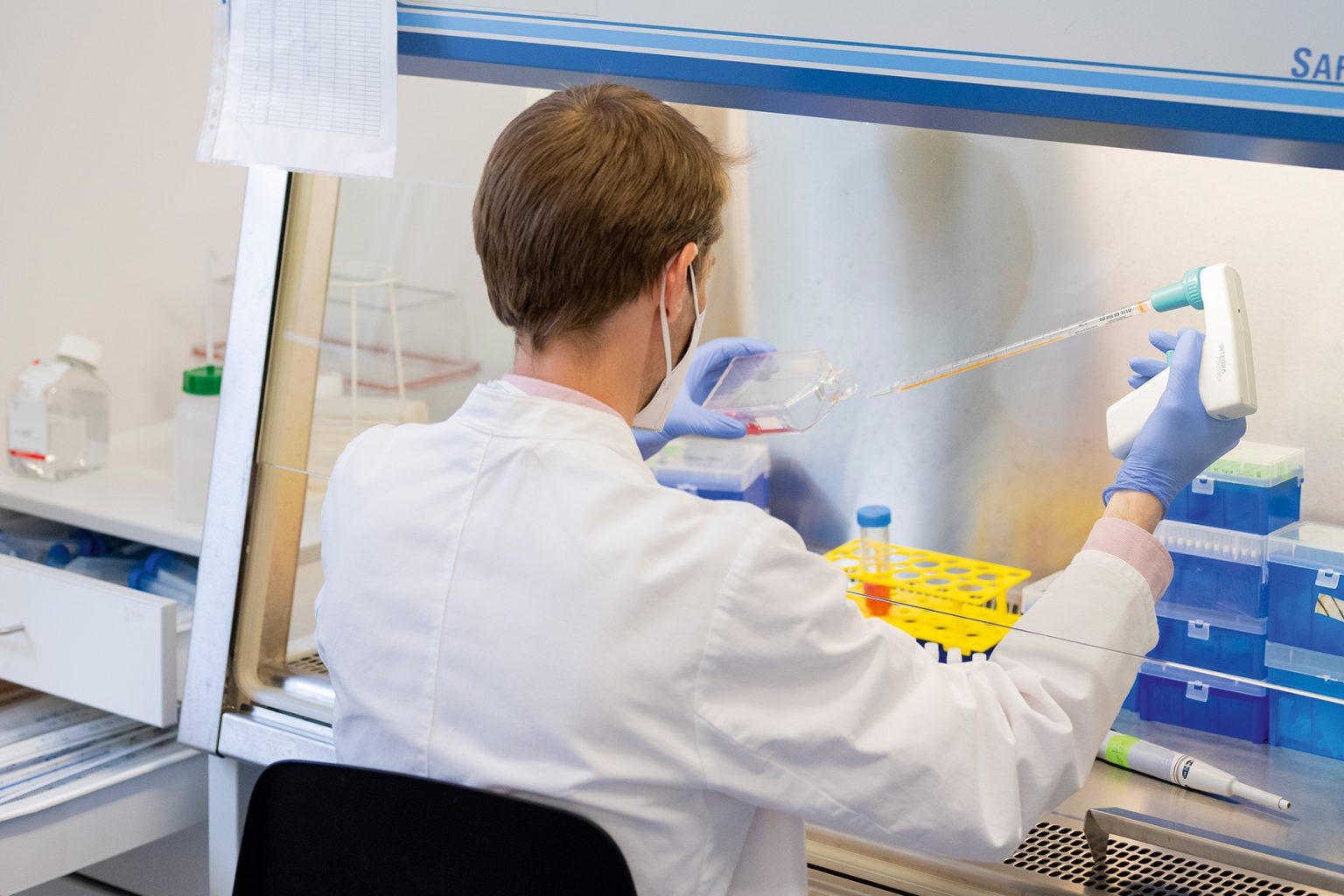
These results of translational research carried out in close exchange with practitioners were published in early 2022. In October that year, another publication on the treatment of colorectal cancer followed, again by a research team led by Prof. Florian Greten and composed of scientists from Georg-Speyer-Haus, the Institute for Tumor Biology and Experimental Therapy and Goethe University Frankfurt. The starting point once again was the tumor microenvironment, which the team's findings showed limits the effectiveness of T cells, our body's natural immune response against cancer. The result is uncontrolled tumor growth. However, the study says that this growth can be stopped by removing aged and damaged mitochondria, the cells’ “power plants”. Once this has happened, new, functional mitochondria are created in the T cells, making the cells “powerful” again. One substance that triggers this process is urolithin A, a metabolite of pomegranates that sustainably improves the function of immune cells in their fight against cancer. In the treatment of patients with colorectal cancer, urolithin A was either administered orally or induced in human T cells in the laboratory. The effect is now being tested in clinical patient trials.
At the end of 2022, the state of Hesse pledged to support FCI with €18 million for another three years, allowing the successful cancer research at the LOEWE center, founded in 2019, to continue. For Prof. Greten, Director of Georg-Speyer-Haus and FCI spokesperson, the renewed funding serves as an endorsement of FCI's interdisciplinary concept and innovative research in cross-cutting programs: “Thanks to this approach we have already managed in the FCI's start-up phase to map the entire process from clinical questions to basic research and therapy development all the way to clinical trials in one interdisciplinary center.” The three existing cross-cutting programs – research into gastrointestinal tumors; acute myeloid leukemia (AML), a type of blood cancer; and brain tumors – will now to be complemented by a fourth cross-cutting program focusing on metastasis. As Goethe University President Prof. Enrico Schleiff stated on the occasion of the second funding commitment, FCI will soon also have its own premises with optimal working conditions. “A visible expression of this consolidation,” Schleiff said, “is the preparations currently underway on our Niederrad Campus for a dedicated, state-of-the-art FCI research building.”
(mb/pb)
Funded by the state and federal governments: Further research projects led by Goethe University Frankfurt
Haushaltsbarometer
Prof. Andreas Hackethal, director of the Household Finance research department at the Leibniz Institute for Financial Research SAFE and professor at Goethe University Frankfurt’s Faculty of Economics and Business, and his team are developing a new “household barometer” (Haushaltsbarometer) that provides detailed real-time insights into the economic situation of private households. With the household barometer, Hackethal takes over the leadership for a subproject in the international consortium EuroDaT, which is funded by the German Federal Ministry for Economic Affairs and Climate Action for two years.
SAFE launches new “household barometer” on household financial data
Mobility Transition
The “Shaping the energy and mobility transition as a socio-ecological transformation in the FrankfurtRhineMain region (transform-R)” project seeks to develop a mission statement for the mobility transition in the region. All relevant stakeholders are to be involved and better coordinated within transform-R. The project, which is funded by the Federal Ministry of Education and Research (BMBF), will also test innovative measures for the region in four three-year real-world laboratories.
More research time for specialist doctors
Specialist doctors at Frankfurt University Hospital can now dedicate part of their working hours to research into infectious diseases. Making this possible is the INITIALISE – Innovations in Infection Medicine program, which the Federal Ministry of Education and Research is funding.
Millionenförderung schafft Freiraum für Forschung zu Infektionskrankheiten
Subject-related language education
2022 marked the start of the “Multi-professional cooperation and professionalization for subject-related language education in all-day schooling” (KoPaS) project at the Faculty of Educational Sciences. Its aim is to promote the subject-related and linguistic learning development of third and fourth grade primary school children – working together with competent teachers and taking individual multilingualism into account. The project is being implemented at three locations (Frankfurt, Bamberg, Berlin).
Regional joint research on political violence
Five Hessian research institutes are cooperating in a new joint interdisciplinary project “Regional Research Center – Transformations of Political Violence (TraCe)”, on the causes, dynamics and effects of political violence. In addition to Peace Research Institute Frankfurt and Goethe University, the partners are Justus Liebig University Giessen, Philipps University Marburg and TU Darmstadt. The joint project, which also strengthens the activities of the strategic Rhine-Main Universities (RMU) alliance, will receive around €5.2 million in funding from the Federal Ministry of Education and Research (BMBF).
Further funding for Islam Academy
The Academy for Islam in Research and Society (AIWG) at Goethe University Frankfurt will receive another €6.4 million in funding for the next five years from the Federal Ministry of Education and Research (BMBF).
Forschungsimpulse geben, Wissenstransfer stärken
Researching liver failure
Scientists from the LOEWE research initiative “ACLF-I” will receive funding to conduct research into a severe form of liver failure (acute-on-chronic liver failure). The overarching goal is to develop new diagnostic and therapeutic approaches for Acute-on-Chronic Liver Failure (ACLF).
Pathogenetic mechanisms of acute-on-chronic liver failure and therapeutic approaches
Prolific cancer research
Thanks to its outstanding achievements in elucidating the mechanisms of tumor development and drug resistance and the discovery of new cancer therapies, the Frankfurt Cancer Institute (FCI) LOEWE center, founded in 2019, will receive an additional €18 million in state funding for another three years.
LOEWE top professorships for virologist and cybersecurity specialist
The state of Hesse is providing €1.4 million in funding for virologist Prof. Sandra Ciesek as part of a LOEWE top professorship. Another LOEWE top professorship goes to cybersecurity specialist Dr. Haya Shulman, who accepted a professorship at Goethe University Frankfurt’s Institute of Computer Science and also conducts research at Fraunhofer Institute for Secure Information Technology (SIT) in Darmstadt.
LOEWE-Spitzen-Professur in Frankfurt für Cyber-Expertin Dr. Haya Shulman
(Photo: Mathias Reding/unplash)
When fake news becomes a problem for international organizations
In her research project FARRIO (“The Effects of Far-Right Challenges on International Organizations”), political scientist Prof. Lisbeth Zimmermann examines the rise of the radical and extreme right in international politics. She received the 2022 ERC Starting Grant, worth €1.5 million, for her work.
The past 20 years have seen a rapid succession of global and local crises: having just recovered from the financial crisis, the world was plunged into the coronavirus pandemic, followed by the war in Ukraine – all while continuously facing the ongoing global crisis caused by climate change. Against this backdrop, the emergence of further conflicts – both at the national and at the international level – has become increasingly likely. “I have always wanted to understand how the system of global governance changes, adapts or shows resilience – when it is challenged, for example, or when disputes over specific issues arise,” explains Lisbeth Zimmermann, who is a professor of political science specializing in international institutions and peace processes at Goethe University Frankfurt’s Faculty of Social Sciences and a private investigator (PI) in the ConTrust cluster initiative.
How can the increase in challenges faced by international organizations be researched? “Over the past two decades, we have been trying much harder to collect quantitative data on global governance, including resolutions, statements by states, reports, protocols and much more. Thanks to new quantitative methods, large amounts of written material can now be analyzed much better.” On the other hand, Zimmermann explains, political processes are also closely followed using qualitative methods, including participatory observation at meetings and negotiations. Currently, the political science professor is conducting a major project to study the transnational New Right and its influence on international organizations.
International organizations see fake news and targeted disinformation as one of their main problems
Building the interface with the cluster initiative ConTrust is the question of when a productive moment – and thus also new trust – can arise from dispute and conflict. “ConTrust addresses trust on very different levels: In addition to researching political conflicts and conflicts over socio-economic distribution, it also focuses on conflicts over real knowledge and expertise. It is this latter sub-area that I am involved in,” Zimmermann says. When does new knowledge lead to conflicts, when does it become trustworthy? “I find this a highly exciting area – one I would like to research more intensively. After all, international organizations see fake news and targeted disinformation as one of their main problems: seeing their expert knowledge increasingly questioned, organizations like the OECD or WHO have to consider what institutional changes they need to make in order to be considered as authorities again. How can they present themselves on social media, for example, or through new institutional structures, to be perceived as being close to the people?”
I have always wanted to understand how the system of global governance changes, adapts or shows resilience over time
— Political scientist Lisbeth Zimmermann
There is another possible reason why the authority and expertise of international organizations has eroded, Zimmermann says: “It is less and less likely today for trained diplomats to be negotiating in these organizations. Instead, this task is increasingly taken on by specialists from ministries or research institutes. The expectation here is that experts will act in international negotiations, and that the political aspect of their work will take a back seat. In principle, however, this is not at all clear, because when people with very different expertise, from very different fields and also with very different political intentions meet in a negotiation – then what role does their respective knowledge ultimately play? To put it another way: how differently do people with different 'truths' view the world and its conflicts? When a climate expert meets an economic expert, how can shared knowledge and – as a result – shared solutions arise? And, from the perspective of ConTrust, how can trust arise from this complex situation?”
(df)
Five European ERC grants for cutting-edge research
Five of Goethe University Frankfurt’s leading researchers have been awarded funding from the European Research Council (ERC) for their visionary research projects between 2022 and 2027. With an ERC Advanced Grant, Prof. Ivan Đikić is researching the membrane microstructure of cells, while Prof. Stefanie Dimmeler is investigating ageing processes in the heart, and Prof. Andreas Zeiher is looking into the genetics of heart valve diseases. An ERC Starting Grant will be awarded to Prof. Mirco Göpfert for his research on the relationship between humor and politics, and to Prof. Lisbeth Zimmermann for her work on the transnational New Right.
This is the third time Stefanie Dimmeler and Ivan Đikić have been successful in acquiring an ERC grant. The European Research Council (ERC) awards ERC Advanced Grants to support ground-breaking research projects by experienced researchers. The grantees will receive up to €2.5 million over a period of up to five years.
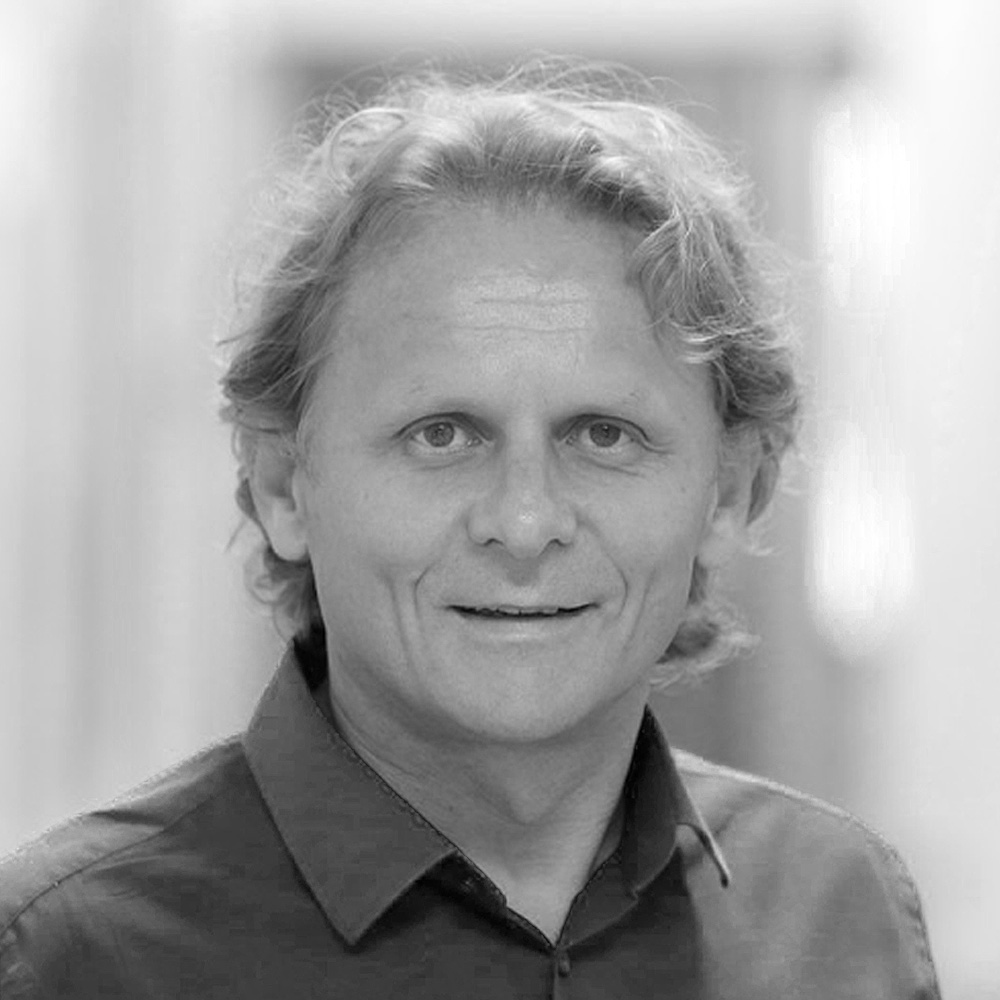
Prof. Ivan Đikić,
Is Director of Goethe University Frankfurt’s Institute of Biochemistry II and Max Planck Fellow at the Max Planck Institute of Biophysics in Frankfurt. His research project ER-REMODEL (“Endoplasmic reticulum remodelling via ER-phagy pathways”) is dedicated to the endoplasmic reticulum (ER), a fine cell structure. As the largest membrane system within cells, the ER performs important functions in the synthesis and transport of cellular components. The new research project will investigate its underlying, precisely regulated mechanisms.

Prof. Stefanie Dimmeler,
Professor of Molecular Cardiology and Director of the Institute for Cardiovascular Regeneration, is investigating the aging process in the heart, as part of the “Neuroheart” (“The cardiac neurovascular interface in aging”) research project, taking a particular focus on repair mechanisms and regeneration in the vascular system and heart. In the long term, she hopes her research will contribute to decoding the molecular mechanisms of heart repair in order to accelerate the healing process after heart attacks and heart failure or to prevent them from occurring in the first place. Stefanie Dimmeler is the spokesperson of the Cardio-Pulmonary Institute (CPI) Cluster of Excellence.
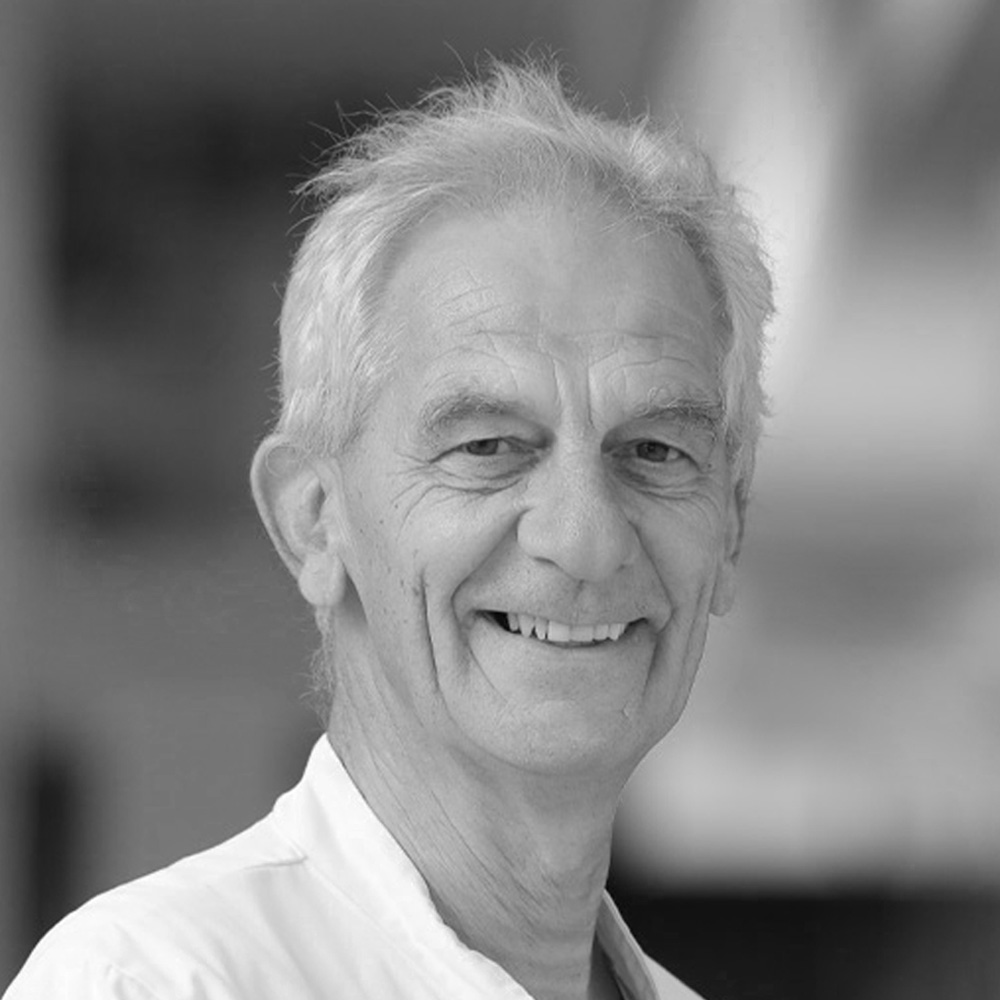
Prof. Andreas M. Zeiher
The focus of his ERC project CHIP-AVS (“Clonal hematopoiesis of indeterminate potential and degenerative aortic valve stenosis”) is on diagnosing and treating patients with coronary heart disease and heart failure, including all interventional treatment procedures. More specifically, Zeiher is investigating the risk factors for degenerative aortic valve stenosis, the most common acquired heart valve disease. Andreas M. Zeiher is a professor of internal medicine/cardiology and co-founder of the Cardio-Pulmonary Institute (CPI) Cluster of Excellence, on whose steering committee he serves.
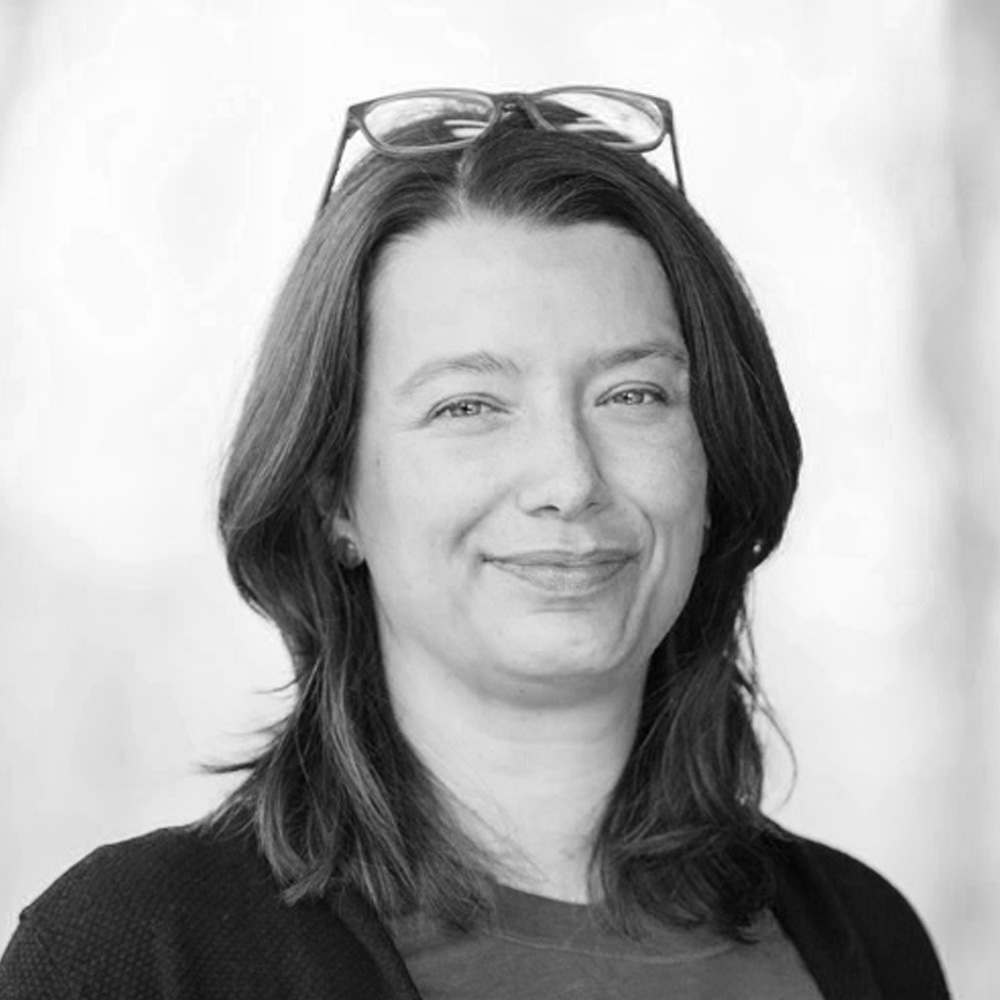
Prof. Lisbeth Zimmermann
has been awarded an ERC Starting Grant for her research project FARRIO “The Effects of Far Right Challenges on International Organizations”. The project, which is dedicated to the rise of the New Right in international politics, will examine the effects of the New Right’s transnational activities on the European Union, the United Nations and its sub-organizations in various policy areas.
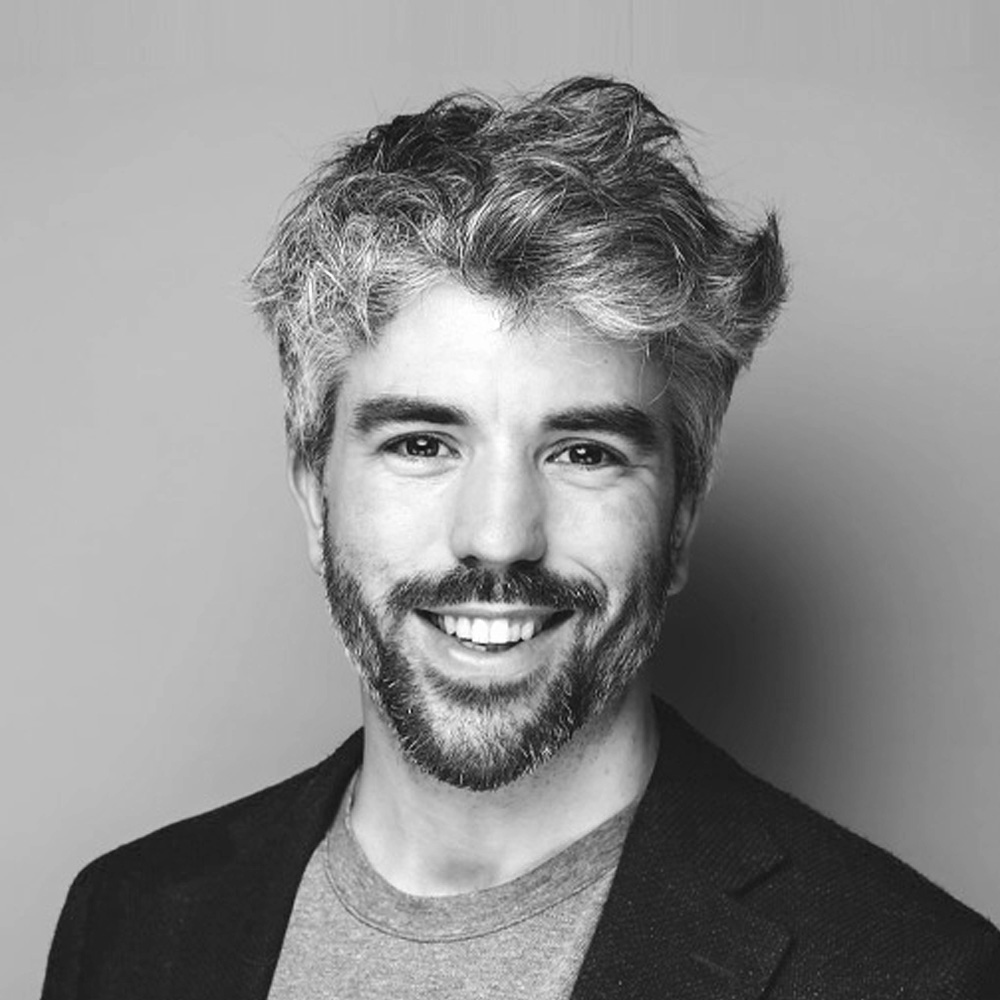
Prof. Mirco Göpfert,
Professor of Social and Cultural Anthropology at the Department of Social and Cultural Anthropology, has also been awarded an ERC grant. His project “NoJoke” (“Humour as an Epistemic Practice of the Political Present”) focuses on the relationship between humor and politics. Göpfert is investigating how the practices of caricature, satire and comedy contribute to our understanding of the politically dissonant present and to what extent the cognitive potential of comedy can be made fruitful for science itself.
ERC Starting Grants support excellent researchers who, in the first few years after completing their doctorates, are setting up their own research teams and want to establish themselves scientifically with a promising research project. They receive up to €1.5 million for the projects over a period of up to five years.
The first image of Sagittarius A* – the black hole at the center of the Milky Way – captured by the “Event Horizon Telescope (EHT)”, an international research collaboration using data from a global network of radio telescopes. (Image: EHT Collaboration)
- EU-funded projects
First image of the black hole at the heart of our galaxy
On May 12, 2022, astronomers publish the first image of the supermassive black hole at the center of our galaxy. Theoretical physicists at Goethe University Frankfurt played a crucial role in interpreting the data.
Some time ago, scientists observed stars in the center of our Milky Way orbiting something invisible, compact and very massive. This strongly suggested that this invisible object – known as (Sgr A*, pronounced “Sadge-ay-star”) – is a black hole. The long-awaited image now published provides the first direct visual evidence that the object is indeed a black hole.
Although we cannot see the black hole itself, because it is completely dark, glowing gas around it reveals a tell-tale signature: a dark central region (called a “shadow”) surrounded by a bright ring-like structure. The new view captures light bent by the powerful gravity of the black hole, which is four million times more massive than our Sun.
“We were stunned by how well the size of the ring agreed with predictions from Einstein’s theory of general relativity,” says EHT Project Scientist Geoffrey Bower from the Institute of Astronomy and Astrophysics, Academia Sinica, Taipei.
Because the black hole is about 27,000 light-years away from Earth, it appears to us to have about the same size in the sky as a donut on the Moon. To image it, the team created the powerful EHT, which linked together eight existing radio observatories across the planet to form a single “Earth-sized” virtual telescope: the Event Horizon Telescope. The EHT observed Sgr A* on multiple nights, collecting data for many hours in a row, similar to using a long exposure time on a camera.
The enormous amount of observational data collected had to be interpreted theoretically. For this, a research team led by theoretical astrophysicist Luciano Rezzolla from Goethe University Frankfurt used supercomputers to simulate how a black hole could look like when observed by the EHT – based on what had already been known about Sgr A*. In this way, the scientists created a library of millions of images. Then, they compared this image library with the thousands of different images of the EHT to deduce the properties of Sgr A*.
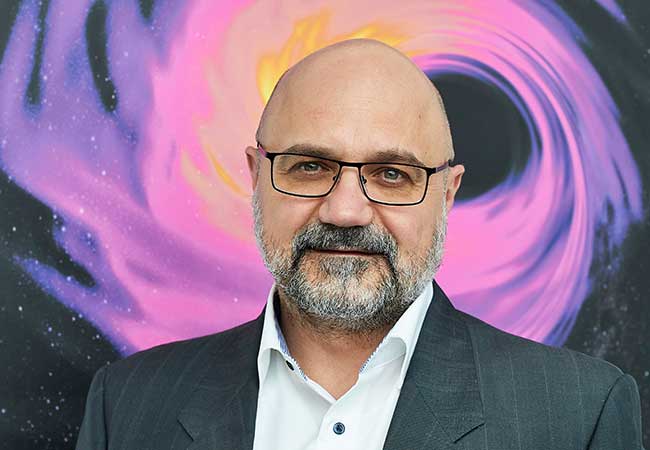
The breakthrough follows the EHT collaboration’s 2019 release of the first image of a black hole, called M87*, at the center of the more distant Messier 87 galaxy.
The two black holes look remarkably similar, even though our galaxy’s black hole is more than a thousand times smaller and less massive than M87*. Although Sgr A* is much closer to Earth than M87*, creating the image was considerably more difficult. The researchers had to develop sophisticated new tools that accounted for the gas movement around Sgr A*. While M87* was an easier, steadier target, with nearly all images looking the same, that was not the case for Sgr A*. The image of the Sgr A* black hole is an average of the different images the team extracted.
The effort was made possible through the ingenuity of more than 300 researchers from 80 institutes around the world that together make up the EHT Collaboration. In addition to developing complex tools to overcome the challenges of imaging Sgr A*, the team worked rigorously for five years, using supercomputers to combine and analyze their data, all while compiling an unprecedented library of simulated black holes to compare with the observations.
Luciano Rezzolla explains: “The mass and distance of the object were known very precisely before our observations. We thus used these tight constraints on the size of the shadow to rule out other compact objects – such as boson stars or wormholes – and conclude that: ‘What we’re seeing definitely looks like a black hole!’”
We calculated three million synthetic images, varying the accretion and radiation emission models
— Luciano Rezzolla
Using advanced numerical codes, theorists in Frankfurt performed extensive calculations on the properties of the plasma accreting onto the black hole. Rezzolla: “We managed to calculate three million synthetic images varying the accretion and radiation emission models, and considering the variations seen by observers at different inclinations with respect to the black hole.” This last operation was necessary because the image of a black hole can be radically different when seen by observers at different inclinations. “Indeed, a reason why our images of Sgr A* and M87* are rather similar is because we’re seeing the two black holes from an almost identical angle,” Rezzolla explains.
“To understand how the EHT has produced an image of Sgr A* one can think of producing a picture of a mountain peak based on a time-lapse video. While most of the time the peak will be visible in the time-lapse video, there are times when it is not because it is obscured by clouds. On average, however, the peak is clearly there. Something similar is true also for Sgr A*, whose observations lead to thousands of images which have been collected in four classes and then averaged according to their properties. The end result is a clear first image of the black hole at the center of the Milky Way,” Rezzolla concludes.
Dass nunmehr Bilder von zwei Schwarzen Löchern sehr unterschiedlicher Größe vorliegen, ermöglicht es den Forschenden, Unterschiede und Gemeinsamkeiten zwischen den Schwarzen Löchern zu verstehen. Die Forschenden testen mit den neuen Daten bereits Theorien und Modelle, um besser vorhersagen zu können, wie sich Gas in der Umgebung supermassereicher Schwarzer Löcher verhält. Man nimmt an, dass dieser Prozess eine Schlüsselrolle bei der Entstehung und Entwicklung Galaxien spielt.
Scientists are particularly excited to finally have images of two black holes of very different sizes, which offers the opportunity to understand how they compare and contrast. They have also begun to use the new data to test theories and models of how gas behaves around supermassive black holes. This process is not yet fully understood but is thought to play a key role in shaping the formation and evolution of galaxies.
Progress on the EHT continues: a major observation campaign in March 2022 included more telescopes than ever before. The ongoing expansion of the EHT network and significant technological upgrades will allow scientists to share even more impressive images as well as videos of black holes in the near future. A number of scientists are associated to Goethe University Frankfurt as part of the EHT Collaboration. Together with Professor Luciano Rezzolla, Dr. Alejandro Cruz Orsorio, Dr. Prashant Kocherlakota and Kotaro Moriyama, they include Prof. Mariafelicia De Laurentis (University of Naples), Dr. Christian Fromm (University of Würzburg), Prof. Roman Gold (University of Southern Denmark), Dr. Antonios Nathanail (University of Athens), and Dr. Ziri Younsi (University College London) – all of whom have provided essential contributions to the theoretical research in the EHT Collaboration.
Their work was supported by the European Research Council.
(mb)
How the first image of Sgr A* was created
Twelve doctoral students from twelve European partner institutes: the CLOUD team at the kick-off of the CLOUD consortium (Photo: CLOUD Doc Network)
- EU-funded projects
“It is very important to have early and close contact with companies”
What role does aerosol formation play in clouds and climate? This is the question early career researchers are investigating as part of the CLOUD Doc network in the EU’s Horizon Europe Framework Program for Research and Innovation. Professor Joachim Curtius, an atmospheric researcher at Goethe University Frankfurt, is the European doctoral network’s scientific coordinator.
Professor Curtius, the CLOUD project’s twelve young scientists are receiving almost €2.7 million in funding from the European Union. The project itself is part of the European Commission's Marie Skłodowska-Curie Actions funding program, which aims to make scientific careers more attractive. What exactly do the young doctoral students want to research across Europe?
Why is this important?
19 institutions are part of the network. Why these?

The research locations are identified as Arctic environments, the upper troposphere above the Asian monsoon region, the upper troposphere above tropical rainforests as well as the Southern Ocean. Yet, most of the research is carried out at CERN. How does that fit together – especially given that CERN is best known for its nuclear research...
Is this a stand-alone project carried out by early career researchers, or is it part of a larger European research network?
Did the participants previously specialize in climate research?
CLOUD works with partners from the private sector. Why are they needed?
Participants are also trained in how to start their own company. What kind of companies are we talking about?
Questions: Pia Barth
Funding for networks: New EU research projects in 2022
“Remote Research”: €1.5 million in funding for large-scale European Remote-NMR project
Further EU funding for Goethe University Frankfurt: Horizon Europe is funding Remote-NMR, a project led by Prof. Harald Schwalbe from the university’s Biomolecular Magnetic Resonance Center. Over the next few years, a network of 26 partners from Europe’s most important research infrastructures for nuclear magnetic resonance spectroscopy (NMR spectroscopy) will develop standardized procedures with which NMR devices can be controlled and used remotely. The European Union will fund Remote-NMR with €1.5 million for three years starting in 2022.
“Remote Research”: €1.5 million in funding for large-scale European Remote-NMR project
Early career atmospheric researchers establish European network
Atmospheric researchers from the international CLOUD network have acquired European Union funding for a doctoral project: coordinated by Goethe University Frankfurt, the CLOUD-Doctoral Network aims to establish a network of early career researchers throughout Europe to investigate the role of aerosol nucleation. The project, which starts in September 2022, will be funded with about €2.7 million. Its research areas include Arctic environments, the upper troposphere above the Asian monsoon region and above tropical rainforests, as well as the Southern Ocean.
